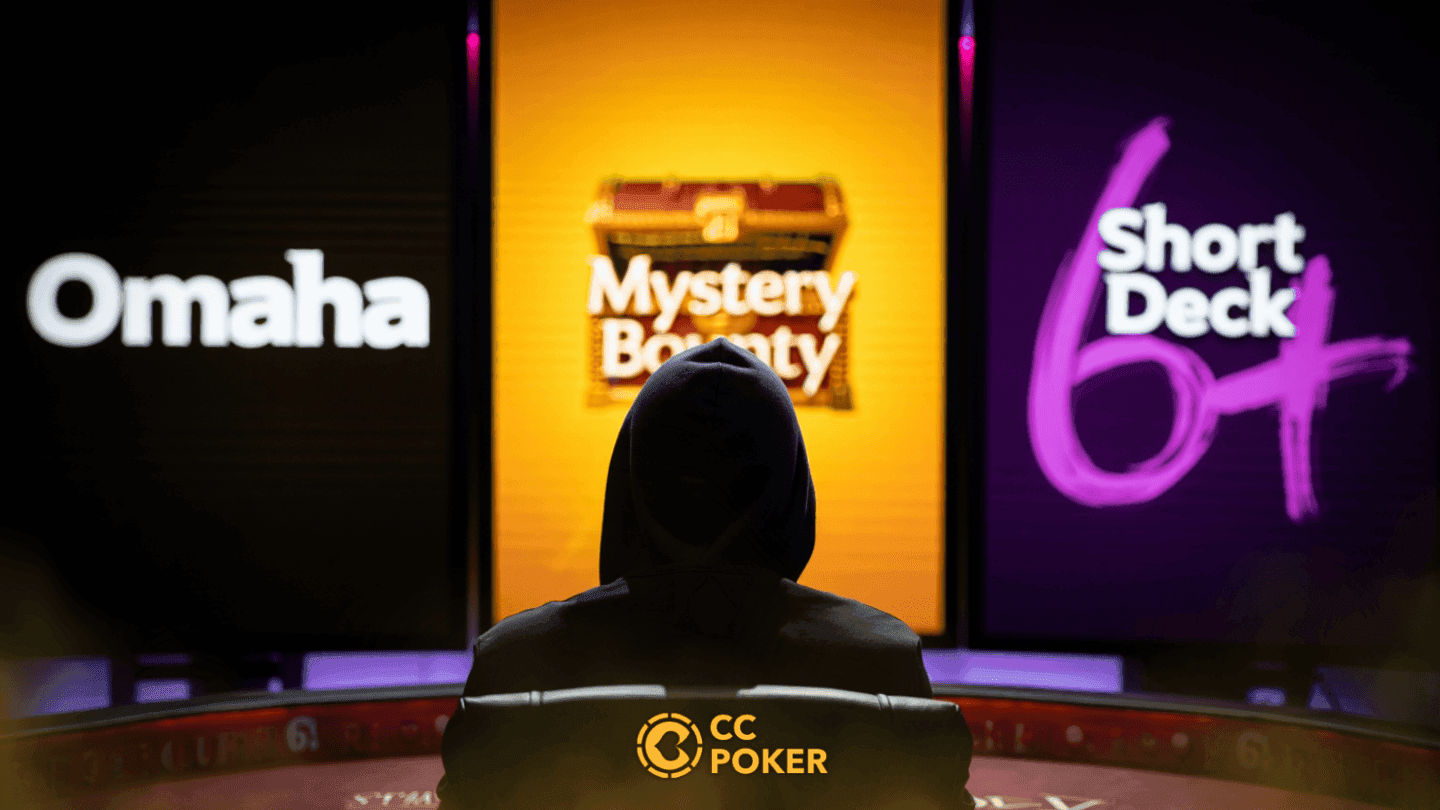How to use GTO solvers to improve your poker game
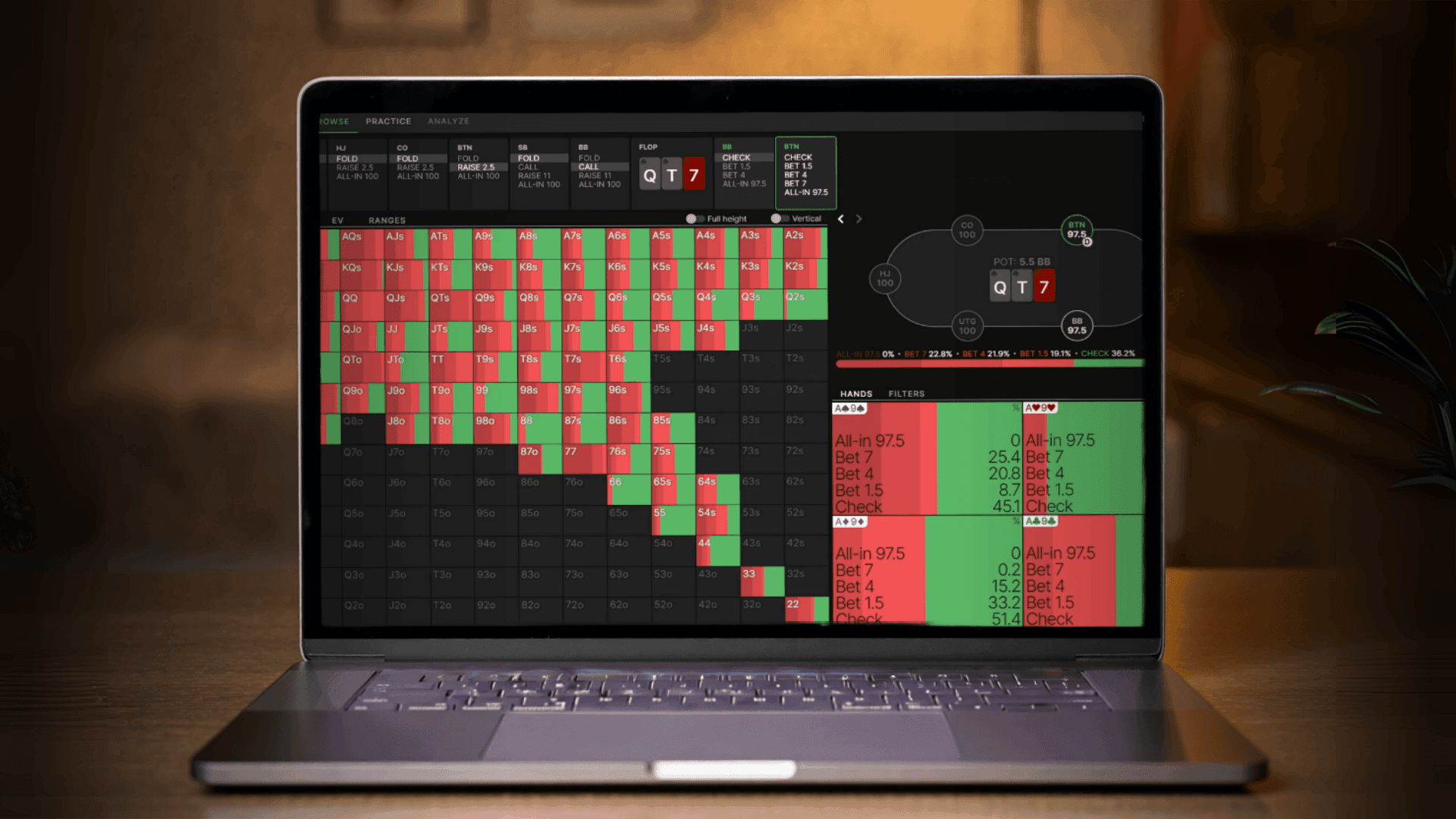
There are three main tools that consistently hold their place in the solver market:
⏺️ GTO+ — This is the optimal choice for beginners or those who want to get the most for minimal cost. The program is inexpensive, doesn’t require a powerful computer, and easily integrates with external range calculators. The interface isn’t the most modern, but it’s intuitive. Users can set their own ranges, configure the decision tree manually, run calculations, and save them for further analysis. GTO+ allows you to model both simple spots (e.g., SB vs BB) and more complex scenarios if the tree is built correctly.
⏺️ PioSolver is considered the industry standard among regulars and professionals. It provides highly accurate calculations with a high level of detail, including bet sizing simulation, multi-barreling, various ranges, and street-by-street actions. It requires more resources—both financial (the license is more expensive) and computational (preferably a powerful PC with a lot of RAM). This is not just hand analysis software but a full-fledged laboratory for deep step-by-step strategy breakdowns.
⏺️ Simple Postflop — A universal tool popular among players who value visual clarity. It supports both instant calculations and the construction of ready-made trees for different types of situations (HU, 3-max, postflop multiway, etc.). The interface is simple, and everything is visualized by streets and actions. The advantage of Simple Postflop is the ability to use pre-set tree templates, which simplifies work for beginners. There are different versions—from basic to PRO, with preflop support and cloud solution storage.
✔️ These three solvers are not competitors but rather steps in a player’s skill growth. You can start with GTO+, move to Simple Postflop for visual analysis, and then use PioSolver for maximum depth. It’s important to understand that the result depends not so much on the program as on how the player works with it: how accurately ranges are set, how correctly the decision tree is built, and how conclusions are interpreted.
GTO Wizard — Market leader

GTO Wizard is a full-fledged educational platform and next-generation solver that works entirely in the browser. It doesn’t require installation, complex setup, or high system requirements. All you need is an account and internet access. GTO Wizard is the most convenient way to work with the model, even for those who have never used offline solvers.
The platform offers a ready-made solution base covering typical situations from MTTs, cash games, and Spin&Go. All calculations are already done on the server, and the player only needs to select the desired spot: positions, stack depth, preflop actions, and board structure. The GTO system instantly shows the strategy as a table of frequencies and EV for each action. Detailed navigation by streets, sizings, and hands is supported. There’s no need to build the decision tree manually—everything is already optimized and pre-configured.
Hand analysis is available. You can upload hand histories in .hh or .txt format, and the system will automatically identify where you deviated from GTO, under-bluffed, or overpaid. Mistakes are highlighted by category: weak call, under-defense, over-aggression, etc. Each decision is accompanied by explanations and statistics.
One of the main advantages of the platform is the training mode. The player selects the desired scenario (e.g., BB vs BTN in a 3-bet pot) and goes through a session where each move is compared to the GTO-optimal one. At the end of the session, the system shows the percentage of correct decisions, EV errors, and progress dynamics. This allows you not just to memorize action lines but to reinforce your understanding of the logic and frequencies behind decisions.
Additional features include filtering by board structures (low, high, rainbow, monotone), bet size selection, and isolating specific hands and situations. All this speeds up work and helps target weak spots in your strategy.
GTO Wizard operates on a subscription basis, with rates depending on the access level (Basic, Pro, Elite). The Pro and Elite versions offer an expanded solution library, including ICM spots, PKO, multiway, and non-standard situations. The interface is adapted for mobile devices—you can study from your phone or tablet.
Solvers in practice

With GTO analysis and solvers, a player can study almost any game situation—from preflop to river. The most valuable areas for strategic development are 3-bet pots, c-bet strategies, and river defense. These zones contain the most mistakes for most players and have a significant impact on overall winrate.
3-Bet Pots
3-bet pots are one of the least understood topics in poker. These are situations where the preflop aggressor makes a re-raise, and the game continues with a larger pot and narrower ranges. Key areas of analysis:
- 3-bet and call ranges: It’s important to understand which hands go into polarized and depolarized 3-bets, depending on position and stacks.
- Playing in and out of position: Solvers show that aggression in position (e.g., BTN vs BB) is used much more often than out of position (e.g., SB vs BB).
- Flop strategies in 3-bet pots: bet sizing, c-bet frequency, check ranges—all of this works differently than in regular raise pots.
A GTO solver helps you see how much actions change depending on flop texture. For example, on a K♠ 8♣ 2♦ board, the solver often suggests checking even with an overpair out of position, while on a Q♣ J♠ 10♠ board, the strategy includes more small bets and increased aggression.
C-Bet Strategies
A continuation bet is not just an “automatic bet on the flop.” It’s a tool for pressure, balancing, and protection. The GTO approach shows when a c-bet is appropriate and when it’s better to check:
- Factors affecting c-bet frequency: board structure, range advantage, stack depth, and positions.
- Types of bets: from micro-bets of 25% to overbets—solvers suggest different sizings depending on the situation.
- Balancing hands: the correct ratio of value bets and bluffs is key. For example, on A♣ 5♠ 3♦, the button can bet almost the entire range, while on 7♠ 6♦ 5♣, you need to balance and check more often.
Training on c-bet spots helps eliminate autopilot play and see where to be aggressive and where to slow down.
River Defense
The river is the street where the most expensive decisions are made. Mistakes here are critical, as bets often make up 70–100% of the pot or more. River defense analysis helps you:
- Understand which hands to call large bets with: strong hands aren’t always needed—sometimes you call even with third pair if blockers and frequencies justify it.
- Avoid overfolding: solvers show that most players tend to fold too often on the river, especially against overbets.
- Consider blockers: cards that reduce the number of value combinations in your opponent’s range allow for correct hero calls.
For example, in a BB vs BTN spot on a river of 8♦ 6♠ 3♠ K♥ 2♦, the solver may recommend calling with 6♠ 4♠ against an overbet because possible flushes are blocked and the opponent’s value range is very limited.
What whould you know?
Working with GTO solvers is not about memorizing “correct actions,” but about understanding the logic behind each decision. The main tool of a solver is the decision tree, and interpreting it correctly is the key to understanding strategy.
The player’s task is not just to remember that “here you should bet 66% of the pot with aces,” but to understand why the solver suggests this in a given situation.
What Is a decision tree and how do you read it?
A decision tree is a scheme of possible actions by streets. It starts with preflop, then branches into different sizings, checks, raises, and continues through flop, turn, and river. The nodes of the tree show:
➕ Action frequencies (e.g., check 40%, bet 60%);
➕ EV of each action (expected value);
➕ Range distribution (which hands take which actions).
A player must be able to look not only at what the solver does, but also with what and why. This shows the essence of the strategy: how bluffs are distributed across lines, how balance is built, and why certain hands go into check rather than bet.
Example
Situation: BTN opens, BB calls. Flop — A♣ 7♦ 2♠, BB checks, BTN decides what to do with A♠ Q♥ (top pair with a strong kicker):
➡️ Most players’ expectation: bet for value;
➡️ Solver’s action: part of the A♠ Q♥ range goes into check, especially on threatless flops.
BTN has a strong range and doesn’t need to protect it with a bet—the solver wants to have top pairs in the check range to protect against raises. If you bet the entire top pair range, the opponent can easily exploit the line with aggression on later streets. Checking allows you to realize equity and trap weaker hands.
This illustrates how GTO not only determines the “best” action but also explains range balance. The player sees: not all value is for betting, not all trash is for folding.
❕ You don’t need to memorize thousands of trees and exact percentages. GTO solvers are tools for identifying patterns:
✔️ On coordinated boards, smaller bets and more checks are used more often;
✔️ In 3-bet pots, aggression decreases on the turn;
✔️ Bluffing is more often done with hands that block potential value combinations.
It’s important for the player to pay attention to patterns: what unites hands that are played through bet or check, which sizings are repeated, where the solver starts to simplify the strategy. These recurring principles are easily transferred to real play—regardless of the specific hand.
Interpreting the tree is about developing an understanding of poker as a system. Instead of trying to memorize every line, you should study the reasons: why a particular decision is better, what it protects, and how it affects balance. Only then does the solver stop being a calculator and become a full-fledged coach.




Last news
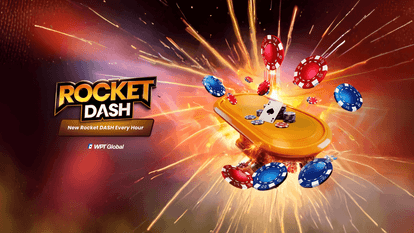
Dynamic poker at maximum speed: Hyper Dash, Rocket Dash, and SNG Dash on WPT Global
.png&w=414&q=75)
2025 results and New Year 2026 greetings from the CC-Poker team
%2520%25D0%25B2%2520%25D0%25BF%25D0%25BE%25D0%25BA%25D0%25B5%25D1%2580%25D0%25BD%25D1%258B%25D1%2585%2520%25D1%2582%25D1%2583%25D1%2580%25D0%25BD%25D0%25B8%25D1%2580%25D0%25B0%25D1%2585-1.png&w=414&q=75)
ICM (Independent Chip Model) in Poker Tournaments: How to calculate correctly and apply for decision-making
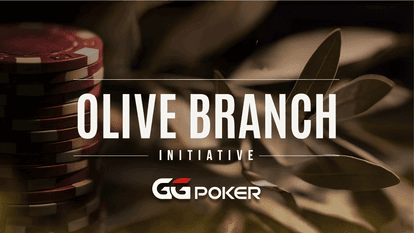
A unique initiative called “Olive Branch” from GGPoker. Global unban
Similar articles
Dynamic poker at maximum speed: Hyper Dash, Rocket Dash, and SNG Dash on WPT Global
Everything you need to know about the new formats on WPT Global. Hyper Dash, Rocket Dash, and SNG Dash: strategy and how to start playing with buy-ins from $1
ICM (Independent Chip Model) in Poker Tournaments: How to calculate correctly and apply for decision-making
Unlock the secrets of ICM strategy: practical examples, chip value calculations, and proven methods for increasing ROI in MTT tournaments
Formats that quickly gained popularity: Omaha, Mystery Bounty, Short Deck, mixed games
An overview of popular poker formats: how to play Omaha, Mystery Bounty, Short Deck rules. How to choose your format and win!

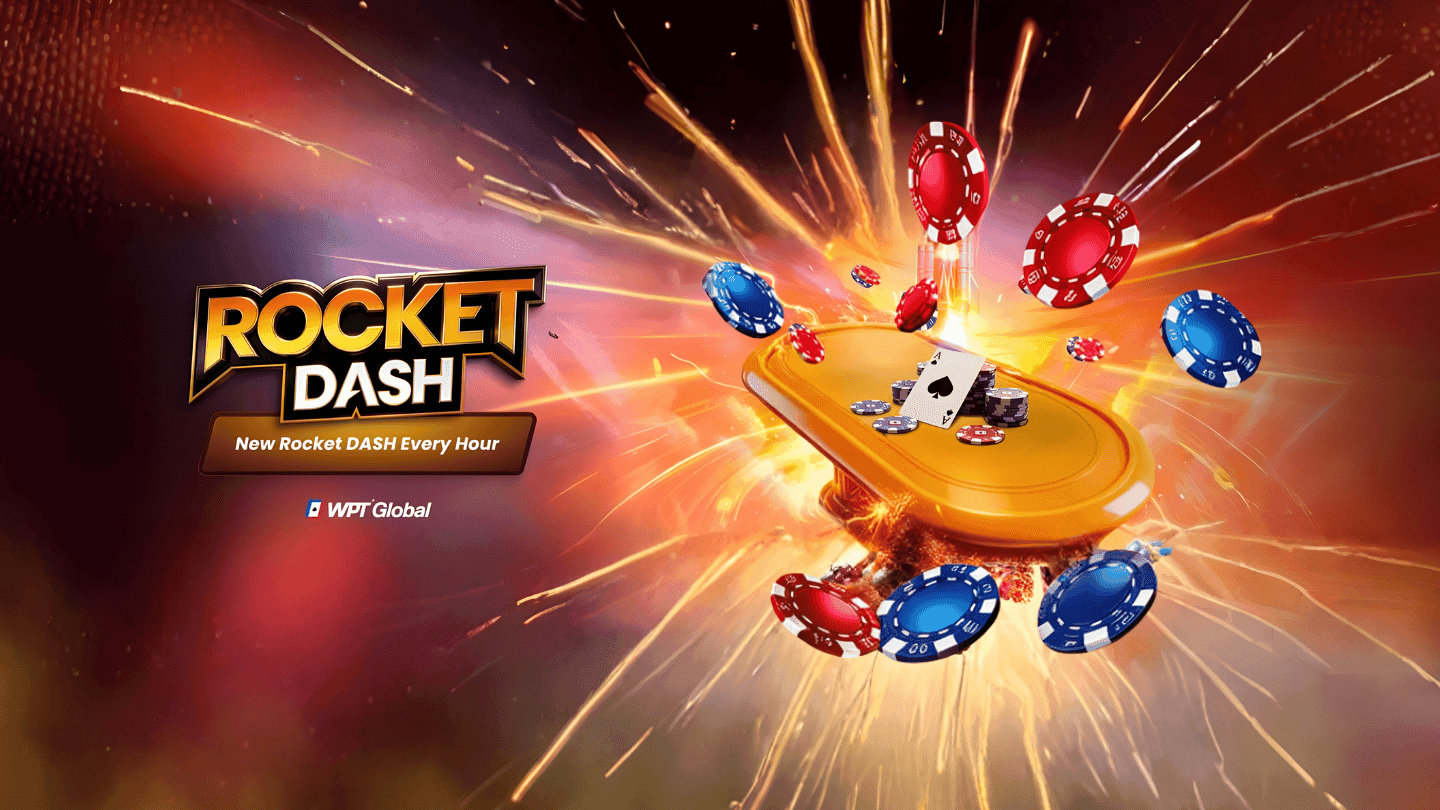
%2520%25D0%25B2%2520%25D0%25BF%25D0%25BE%25D0%25BA%25D0%25B5%25D1%2580%25D0%25BD%25D1%258B%25D1%2585%2520%25D1%2582%25D1%2583%25D1%2580%25D0%25BD%25D0%25B8%25D1%2580%25D0%25B0%25D1%2585-1.png&w=1920&q=75)
